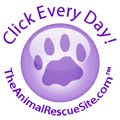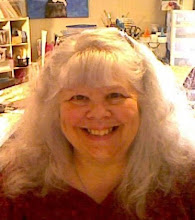COW BRAINS IN YOUR LIPSTICK?/PROTEIN MEAL MADE FROMM DOGS & CATS
One Voice..
Are Cow Brains
Lurking in Your Lipstick?

You’re probably thinking, "I hope not!"—but how can you be sure?
The Food and Drug Administration recently told cosmetics makers to stop using the brains and spinal cord tissue from older cows in products like lipstick and hair spray in order to try to prevent the spread of mad cow disease to humans. Ready for the bad news? These same icky ingredients are "OK" if they come from cows younger than 30 months of age.
Cosmetics companies use animal ingredients such as tissue and tallow (fat) because they’re cheap, not because they’re better than plant-based or synthetic ingredients. Slaughterhouses kill billions of animals every year and have to dispose of the "byproducts" somehow; selling them to cosmetics manufacturers is one easy solution.
Unfortunately, even avid label-readers can’t always determine what they’re putting on—and in—their bodies. There are thousands of technical and patented names for ingredient variations, and many ingredients known by one name can be of animal, vegetable, or synthetic origin. And if that’s not confusing enough, some companies have slyly removed the word "animal"from their labels in order to avoid turning off consumers. For example, instead of saying "hydrolyzed animal protein," companies may use a term like "hydrolyzed collagen."
Cruelty Free Consumer
A cruelty free product means that no animal was burnt, blinded, cruelly confined, tortured, force fed poison, slaughtered or deprived of what is necessary to all living things in the making or testing of the product. For more and more people whether or not a product is cruelty free has become the determining factor in whether or not they will buy the product. This is a definite sign of progress and very welcome news for animals and animal lovers alike.

It may seem daunting at first when you first realize that you can no longer morally allow yourself to purchase any of your trusted and favorite brands. Once the initial shock wears off and you commit to becoming a cruelty free shopper, you will soon discover that becoming a cruelty free consumer in a world that is over run with animal tested products and people who are innocently unaware of the nature and reality of animal testing is not always easy.
Vegan products can mainly be found in health food stores. You can find a few at your local drugstore but the selection is usually limited to one or two products only.
Once you become a more confident and convinced cruelty free consumer, you can try asking the manager of your local drugstore to carry your favorite vegan products . Be sure to be specific about what the products are and why you would like for the store to carry it.
You can also buy vegan products online. There are many high quality vegan companies who can most easily be found online. For a comprehensive list of these companies, please visit the links.
Companies That Don't Test on Animals
Vegan Companies
After you get used to the new way of shopping and living that is 100% vegan and cruelty free you will be amazed that you were ever too busy or overwhelmed to buy cruelty free products and to begin your journey to becoming a vegan and 100% cruelty free you.
To be absolutely certain that you are buying a cruelty free product, please refer to the links on this page.
The Difference Between
Vegan and Cruelty Free

The label cruelty free does not mean that a product actually is. There is no legislation that deals with the labelling of beauty and health products. This means, for example, that a product can be labelled cruelty free even if the company tested every one of the ingredients on animals but didn't test the finished product. Cruelty free products can also contain animal products or use ingredients that were animal tested by other companies.
Vegan products contain no animal ingredients and are usually strict and specific about animal testing and using animal tested ingredients on their labels.
..There is a significant difference between a cruelty-free label and a vegan label. Vegan products adhere to cruelty-free standards, but in addition, these products don't contain any animal ingredients or animal byproducts. Many conventional beauty products, particularly cosmetics and shampoos, contain ingredients that are derived from animals or animal byproducts
If you're concerned that your beauty products aren't vegan and a telephone call to the company doesn't reveal whether an ingredient is animal-derived or not, PETA's Wesley suggests contacting an animal protection organization. They'll be able to provide you with the detailed ingredient information that makeup labels do not provide.
Here is a listing of some surprising animal ingredients to look for on cosmetic labels and some greener alternatives
Ingredient: Allantoin
Source/Use: Found in cows and other mammals and used as a healing agent in many cosmetic creams and lotions
Alternative: Allantoin is also found in many plants, particularly the extract of comfrey root.
Ingredient: Beeswax
Source/Use: Wax from virgin bees is used as a sealant in lipsticks, mascaras, eye creams, lip balms and nail whiteners
Alternative: Paraffin, vegetable oils and fats.
Ingredient: Boar bristles
Source/Use: Hair from boars commonly used in makeup brushes and toothbrushes
Alternative: Nylon or vegetable fibers.
Ingredient: Biotin
Source/Use: Found in all living cells and used in cosmetics and shampoos
Alternative: Plant sources.
Ingredient: Stearyl alcohol or sterols
Source/Use: A mixture of solid alcohols that may sometimes be prepared from sperm whale oil and is used in skin creams, hair rinses and some shampoos
Alternative: Vegetable stearic acid
Ingredient: Fish liver oil
Source/Use: A source of vitamin A sometimes used in cosmetics and hair dyes
Alternative: Vitamin A derivatives from carotene (carrots) or synthetic sources
Ingredient: Mink oil
Source/Use: An emollient used for its moisturizing properties in cosmetics and skin creams
Alternative: Vegetable/natural oils such as avocado, almond and jojoba
Ingredient: Silk/silk powder
Source/Use: The tiny fibers made by silk worms to form a cocoon -- used as a coloring ingredient ion face powders and soaps
Alternative: Milkweed seed-pod fibers or synthetic silks
Ingredient: RNA (Ribonucleic Acid)
Source/Use: Slaughterhouse waste that is commonly used in many protein-enriched shampoos and conditioners
Alternative: Plant cells
Ingredient: Sponge (luna and sea)
Source/Use: A sea animal that looks like a plant and is used as an ingredient for sponges and loofahs
Alternative: synthetic sponges
Ingredient: Stearic acid
Source/Use: Fat extracted from cows, sheep and pigs and used as a lubricant in deodorant, hair spray, shampoo and soap
Alternative: Vegetable fats or coconut
One Voice
Animal Rights Movement
DEAD DOGS AND CATS! SOILENT GREEN!
•JenJen™ loves all the Animals! {go vegan}
Vegan^v^Oddity(Lives In The Land Of Narrow Minds)
*Vegan* Voodoo Priestess
AWESOME VIDEO! DEAD DOGS AND CATS ARE MADE INTO PROTEIN COOKIES, MAKE UP, AND GELATIN. YOUR LIPSTICK, EVEN DESERT, IS MADE FROM DEAD THINGS. GUESS WHAT FOLKS-THIS HAPPENS IN THE UNITED STATES OF AMERICA WHICH MEANS SOYLENT GREEN HAS COME TRUE-NEXT THING YOU KNOW THE US GOVERNMENT WILL LEGALIZE HUMAN REMAINS TO BECOME PROTEIN FOOD!!! HairSalonMania
OFFICIAL~JUSTICE 4 BABYBOY PAGE~
SADDEST THING EVER














1 Comment:
Regarding the rendering video, I've worked in a veterinary clinic and that's why I always try to convince people to take their pets to be buried, preferably at home. Cremations for pets are another thing entirely. And I don't recommend people doing that either. (They do it in batches). I'm not against putting an animal down (especially if the quality of life isn't there anymore), however it is good for people to realize what happens to the pets that are left at the veterinarian's office. Similar rendering is done for farm animals (including horses) with the exception that generally the hide is removed prior to grinding and processing. I don't have a problem with rendering bodies of animals because otherwise they would wind up in landfills and recycling is important to keep our landfills working as long as possible. (Yes I am an animal lover, and had to have a cat put to sleep, he's buried in the front yard under the bird feeder so he can still be with us.)
Post a Comment